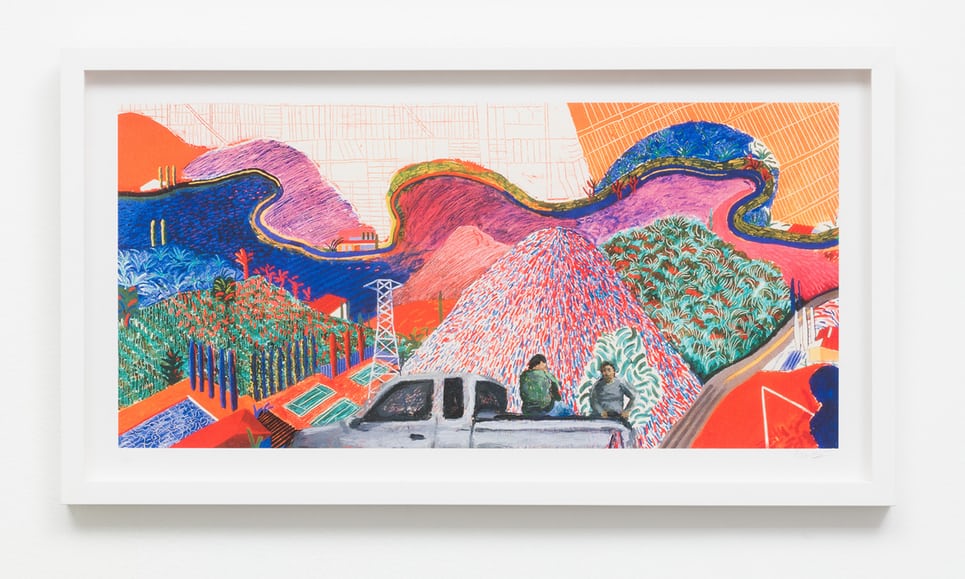Enter the work of Ramiro Gomez, a young LA painter born in California to two undocumented Mexican immigrants (who have since obtained legal citizenship). In 2014, he reproduced Hockney’s A Bigger Splash, a painting of an LA backyard seen beyond the tip of a diving board, noted for the implied subject, presumably under the splashing water. For his version No Splash, Gomez added the implied characters; not the diver, but a pair of faceless, dark-skinned workers raking the water for impurities and squeegee-cleaning the house’s floor-to-ceiling windows. Employing the same technique, he subsequently turned Hockney’s American Collectors into American Gardeners, and Beverly Hills Housewife into Beverly Hills Housekeeper. Diverting from Hockney’s focus on southern California splendor, Gomez’s painting calls attention to those whose labor is required to maintain it, both as homage and soft-spoken rebuke.
“I’ve been asked if I’m filling in the gap that David Hockney omitted, or that art history itself is omitting,” Gomez says in his sunny-hot LA studio, reclining in a plush armchair as streaks of paint dry on his arms and jeans. “It’s both. It’s a way of expanding on David’s work and increasing that awareness of its limitations; I’m talking about representation in art history and inclusion,” he adds, noting the work of artists of color such as Kerry James Marshall, or the Chicano LA activist collectives Los Four and Asco, as his predecessors.
Gomez knew these limitations intimately well. His parents work as a custodian and a truck driver, while he himself worked as a live-in nanny in West Hollywood in his early twenties. The family’s backyard pool and sliding glass doors were a vision of Hockney’s Los Angeles, although not at all hours of the day. Gomez witnessed a twice-daily shift exchange: in the morning, the predominantly white population would exit the Hollywood hills just as the predominantly brown hired help would arrive. Latino men and women who resembled his uncles and aunts adhered strictly to an unwritten hierarchy: unlike Gomez, the men who came to the house regularly to clean the pool and manicure the lawn would never set foot inside. The women who cleaned the interiors would never use the kitchen for something as simple as getting a glass of water; one had to be offered. And at 5 pm, they would exit the hills as the second shift exchange took place.


